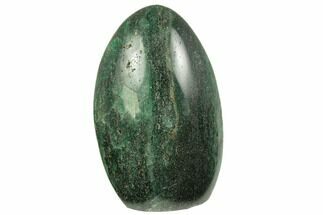This Specimen has been sold.
4.8" Cluster of Pyrite Replaced Brachiopods and Bryozoa - Ohio
This is an impressive, 4.8 x 2.1" cluster of pyrite replaced brachiopod (Cyrtina umbonata) fossils on pyritized ribbon bryozoans of the genus Sulcoretopora. It was collected from the Middle Devonian aged Silica Formation in Lucas County, Ohio, and has been meticulously prepped to expose the beautifully preserved fossils. You can really feel the heft of the pyrite when holding the specimen in your hand.
Comes with a display stand.
Comes with a display stand.
Brachiopods are members of the phylum Brachiopoda. They are clam-like with wide shells composed of two halves called valves. They are filter feeders that live fixed to rocks or on the seafloor. Brachiopods first appeared in the early Cambrian as simple forms with non-articulating shells. Their diversity peaked during the Devonian, and there are currently 12,000 described fossil species of Brachiopoda from 5,000 genera. Most species of brachiopod died out during the Permian-Triassic Extinction but about 450 species still live today. They live in cold marine environments like polar seas or continental shelves and slopes. The largest fossil Brachiopod found is 7.9 inches (200 mm), but most are 2-4 inches (3-8 cm). Living Brachiopods also fall into this range.
Brachiopods are more closely related to Bryozoans than Mollusks. The easiest differences to identify are in the shells of clams, part of the mollusk family, and Brachiopods. Mollusk shells are divided into left and right while brachiopod shells are divided top (dorsal) and bottom (ventral). Mollusk shells are usually equal on the right and left. In brachiopods, the bottom shell is larger than the top. The other big difference is in how they feed: both are filter feeders, but mollusks extend their filter into the water and pull food into their shells. Brachiopods have internal feeding structures: water is drawn into the shell where the food is filtered out before expelling it out.
Brachiopods are more closely related to Bryozoans than Mollusks. The easiest differences to identify are in the shells of clams, part of the mollusk family, and Brachiopods. Mollusk shells are divided into left and right while brachiopod shells are divided top (dorsal) and bottom (ventral). Mollusk shells are usually equal on the right and left. In brachiopods, the bottom shell is larger than the top. The other big difference is in how they feed: both are filter feeders, but mollusks extend their filter into the water and pull food into their shells. Brachiopods have internal feeding structures: water is drawn into the shell where the food is filtered out before expelling it out.
Bryozoans are microscopic aquatic invertebrates that live in colonies, forming skeletal structures similar to corals. Each skeletal structure has a form unique to each particular species. The individual byrozoans forming these colonies are filter feeders called zooids, straining nutrients from the surrounding water.
SPECIES
Cyrtina umbonata & Sulcoretopora sp.
AGE
LOCATION
Lucas County, Ohio
FORMATION
Silica Formation
SIZE
Largest Brachiopod: .6" wide, Cluster 4.8 x 2.1"
CATEGORY
ITEM
#325691
We guarantee the authenticity of all of our specimens.
 Reviews
Reviews











